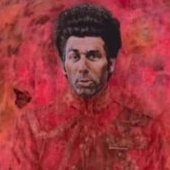Report Thai and Cambodian Soldiers in Stand-Off After Border Gunfire Exchange
-
Recently Browsing 0 members
- No registered users viewing this page.
-
Topics
-
Popular Contributors
-
Latest posts...
-
57
Western Allies Warn Israel Over Gaza Offensive as Fragile Talks Resume in Doha
Please read my posts correctly. I did not write, that there were no rapes. I wrote about false claims made by Israel about systematic use of sexual violence and gang rapes not about single incidents. Women were raped which is horrific. But systematic use of sexual violence to suppress an opponent is happening in Israel’s prisons every day -
67
Three U.S. ex-presidents denounce the current one in a two-week stretch
They were US Citizens. What crime were they charged with? -
57
Western Allies Warn Israel Over Gaza Offensive as Fragile Talks Resume in Doha
The IDF does not lie!!! Mistakes have been made and are made in every war! They were mistakes and not lies!! They are one of the most moral armies in the world, dropping leaflets & texting civilians, before they bomb. Do you know any other army that had done this during a war?- 1
-

-
57
Western Allies Warn Israel Over Gaza Offensive as Fragile Talks Resume in Doha
I did not write, that Netanyahu claimed that. He spoke directly to Biden about dozens of children burned and executed. which also was a lie. I wrote, that netanyahu's office claimed that, that's why it was publicly stated by Biden. and confirmed by the White House -
67
Three U.S. ex-presidents denounce the current one in a two-week stretch
@gamb00ler https://www.mercatus.org/sites/default/files/d7/SS-Trust-Fund-1000.png -
57
Western Allies Warn Israel Over Gaza Offensive as Fragile Talks Resume in Doha
Are you forgetting that it was hamas who started this current round of fighting by its barbaric attack on Israel on 7th Oct.! How did you, or hamas think Israel would respond??? How would your country have responded??
-
-
Popular in The Pub
-








Recommended Posts
Create an account or sign in to comment
You need to be a member in order to leave a comment
Create an account
Sign up for a new account in our community. It's easy!
Register a new accountSign in
Already have an account? Sign in here.
Sign In Now